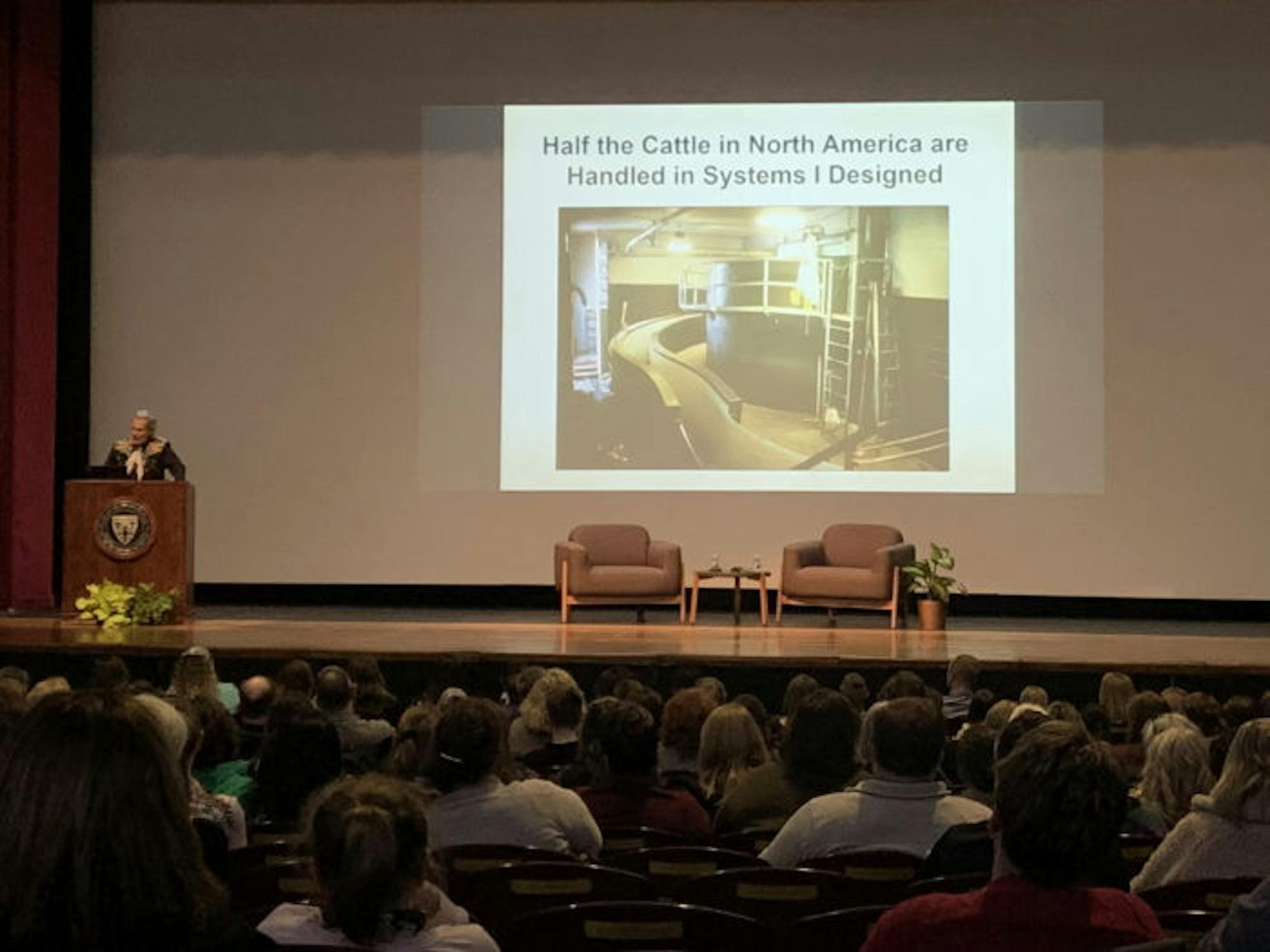The Saint Mary’s community gathered in O’Laughlin Auditorium Wednesday evening to hear from professor, animal science expert and best-selling author Temple Grandin about her experiences with autism spectrum disorder and advice for others on the spectrum. Grandin served as the College’s inaugural Autism Studies lecture speaker. 
Director of the College’s Masters of Autism Studies Program Michael Waddell discussed how the department approaches the study of autism.
“One of the cornerstones of the Master of Autism Studies program is our belief that if we truly want to understand autism, we must not only study the science of autism, but also listen to the voices of people on the spectrum,” he said.
With this focus in mind, Waddell noted the department found an easy choice in Temple Grandin as this year's speaker.
“When we began to plan this first autism studies lecture, more than two years ago, it just seemed right to us that the speaker should be a person on the spectrum and there's one autistic person whose teaching has been more influential than any others,” Waddell said. “A person who has not only given us insight into the challenges faced by people on the spectrum, but also opened our eyes to the gifts of people on the spectrum. A person who helped us to understand that while autistic people might be different, they are not less of a person … This person is, of course, Temple Grandin.”
Grandin’s personal experience
Grandin started her speech by stating she was non-verbal until she was four years old. She cited early intervention through speech therapy and her mother’s guidance as being beneficial to her development.“I had great teachers,” she said. “My mother had a very good sense of how to stretch me just slightly out of my comfort zone and give me choices.”
Grandin’s mother also helped her learn to read when Grandin was eight years old by applying letter sounds to books “that were worth reading.”
Grandin recounted when she would fixate on drawing the head of a horse as a child and her mother’s suggestion to expand the image.
“Take that fixation and expand,” she said. “Let’s draw the whole horse. Let’s draw the saddle. Expand that fixation — don't stomp it out. Expand, so it’s less fixated.”
Grandin explained her passion for science began with encouragement from one of her science teachers.
“Mr. Carlock, my science teacher, what he did for me, [is] just show me how education was a pathway to the goal of becoming a scientist,” she said.
Grandin emphasized the importance of her finding friends with shared interests when she was being bullied in high school.
“Whether I did horseback riding or model rockets or electronics, nobody was doing [any] teasing there,” she said.
When she was struggling with health issues in her 20s and 30s, Grandin told the audience about her success with medication since she started taking low doses of antidepressants around 1980.
Grandin stated that she is more than her autism diagnosis.
“When you really get right down with things like university professor, designer — those are my real identity,” she said. “Autism is an important part of who I am. But my work — I am my work. That's what makes life interesting for me.”
Finding opportunities for those on the spectrum today
Grandin discussed how young people with autism tend to struggle to find quality jobs in various technology industries.“I guess everybody here knows that Elon Musk is on the spectrum,” she said. “I think he's got a pretty good career. But what I'm seeing is I'm not seeing these kids getting fabulous jobs in the video game industry.”
To get those on the spectrum into the workforce, Grandin discussed teaching certain skills during childhood.
“What we've got to do is start teaching work skills early,” she said. “Chores for little kids and church volunteer jobs at around the age of 11 — that's paper route age. Because I want them to learn how to do a task on a schedule outside the home [where] somebody else is the boss.”
She continued by discussing the similarities between artificial intelligence and the brains of people with autism.
“What's interesting is [that] artificial intelligence is the autistic brain,” Grandin said. “It’s trained with specific examples.”
Grandin showed the audience a list of special interest classes including creative writing, playing musical instruments and theater which are increasingly removed from schools' curriculum. Grandin expressed a desire for schools to reinstate these courses so students can be exposed to ideas that interest them.
“I get asked all the time, if I could do one thing to fix the schools, what would I do? I’d put every class on these slides back in the schools,” she said.
In addition, Grandin explained the harm of not building up a student‘s talents in school to promote career readiness.
“We spend too much time pounding away on the thing the kid’s bad at and not building up the thing that the kid’s good at,” she said. “Because I'm gonna see them get into a good career.”
Grandin emphasized that work in the skilled trades can lead to opportunities for visual thinkers like herself who are on the spectrum.
“Now there's a tendency sometimes to stick your nose up at the very high-end skilled trades,” she said. “Now I'm not saying it's for everyone, but for a lot of the people that are my kind of mind — the visual thinker — that’s the way to go.”
Grandin concluded her talk with a simple idea: introduce people on the spectrum to things that will spark their interests.
“We got to show kids interesting stuff together,” she said. “Get all these cool patterns. Get some science and nature journals in the high school library, fractals — that's math and pictures — math and planets. [This] stuff's all free online.”









